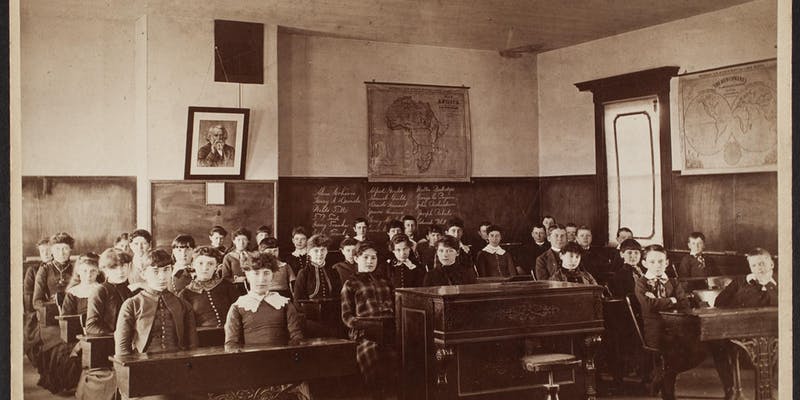

Beginning in the 1830s, when educational reformers began pushing for a more visual geography curriculum, the structure of primary and secondary school geography textbooks shifted and the construct of race became one of the many ways children were taught to order, categorize, and interpret the world around them. From the 1830s to the first decade of the twentieth century, the majority of American Geography textbooks included a small chapter or lesson entitled, “The Races of Men.” As literature scholar Anne Baker explains:
“Motivated both by political zeal and the desire to sell more schoolbooks in the expanding national market, antebellum educators encouraged their readers to conceptualize the world in new ways. In the process, they played a powerful role in predisposing them to accept new theories of race.”
The fact that many white Americans in the nineteenth century came to adopt a significant worldview regarding racial hierarchy in regards to white supremacy and territorial expansion can at least partially be attributed to the textbooks that hundreds of thousands of school children at public and private schools throughout the nation were utilizing. In the decades leading up to the Civil War, in an attempt to justify slavery and the removal of Native Americans from their lands, many Americans turned to pseudoscience and falsely constructed Romantic nationalist ideas about race that were also popular in Europe. As you can see by the textbooks on display here, those beliefs were perpetuated in textbooks and classrooms around the country.
Indeed, these geography textbook chapters on “Races of Men” and accompanying sections on supposed “degrees of civilization,” played a significant role in contributing to structural racism within American schools both through the visual fabrication of racial hierarchy, as well as the rote memorization of racist statements on the supposed “natural” superiority of the white/caucasian race, etc. Though these textbooks are abhorrent and offensive to the modern reader, it is important to note that we are still dealing with the generational effects of this pedagogy.
Roswell C. Smith
Smith’s First Book in Geography : An Introductory Geography, 1859
Osher Collection
https://oshermaps.org/map/3639
Roswell C. Smith
Smith’s New Geography, 1861
Story Collection
https://oshermaps.org/map/3647
D.M. Warren
A New Primary Geography illustrated by numerous maps and engravings, 1870
Osher Collection
https://oshermaps.org/map/11629
William Swinton
Introductory Geography in Readings and Recitations, 1882
Osher Collection
https://oshermaps.org/map/7915
Horace S. Tarbell
The Werner Introductory Geography, 1896
Osher Collection
https://oshermaps.org/map/3818